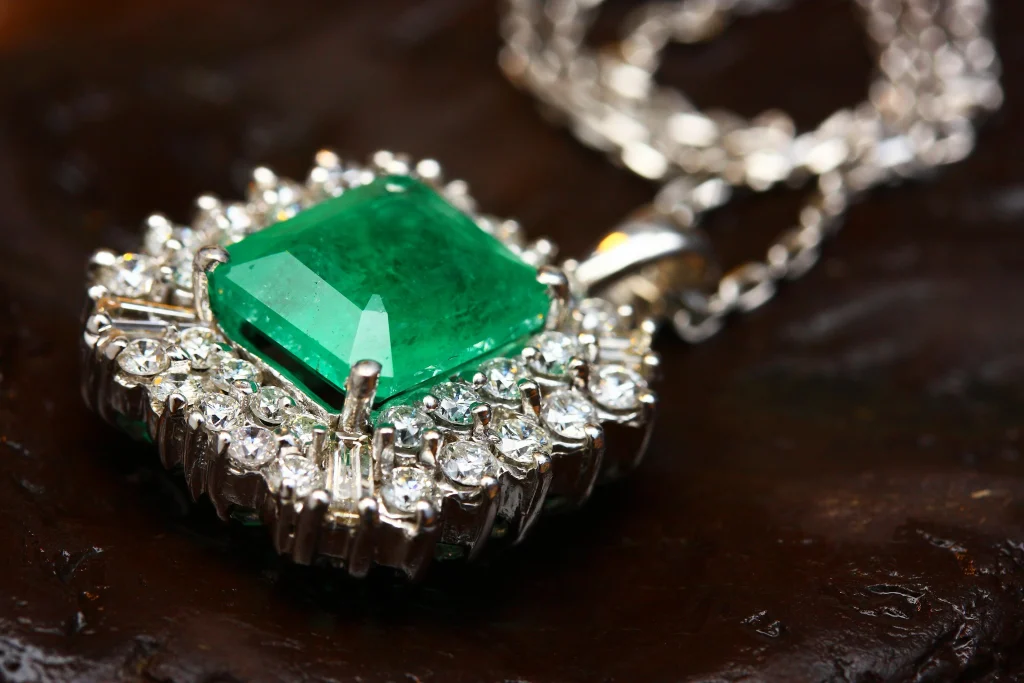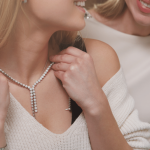Traditional style rules once said: don’t mix metals. Gold or silver, never both. That era is over. Today, mixing metals is a bold, expressive trend. It gives depth and visual interest.
It makes even simple outfits stand out. When done right, the look feels intentional, not messy.
Try anchoring your jewelry with a meaningful staple, such as September birthstone jewelry, near the top of your stack.
It sets a personal tone while creating a clean starting point for your mix. From there, you can build layers confidently, blending metals without fear. This guide shows you how.
Why Mixing Metals Works Today
Style norms have evolved. We’re no longer bound by strict matchy rules. Mixing metals adds texture, contrast, and personality.
Imagine pairing rose‑gold hoops with a silver chain and gold cuff. That combo feels modern and curated. It’s about expressing uniqueness.
Your jewelry doesn’t need to match perfectly, but it should feel thoughtfully combined. Layering diverse metals highlights each piece’s character.
It allows mixing cool and warm tones for a dynamic effect. This trend is hugely popular in street style, red carpets, and everyday chic.
It invites experimentation and embraces individuality. When you mix metals right, you feel stylish and empowered.
Start with a Statement Piece
Pick one strong piece as your hero. It could be a bold gold necklace, chunky silver cuff, or rose‑gold pendant. Make it the centerpiece of your look.
Everything else supports that main piece. For example, if a gold necklace anchors the outfit, add subtle silver rings and rose‑gold stud earrings.
Choose smaller items that echo the hero’s tone. This creates cohesion without overloading the look. Your accessories feel curated, not random.
This approach ensures balance and clarity in your ensemble.
Start big, then tone down. Let other pieces whisper, not scream. That way, your hero shines bright.
Thanks for reading—why not stick around and see what else is new?
Use Bridging Pieces
Introduce mixed-metal jewelry that intentionally blends tones. Think pieces like two‑tone gold‑and‑silver bracelets or tri‑metal rings. These serve as seamless transitions between different metals.
For example, a bracelet mixing gold, silver, and rose‑gold allows you to wear pearl earrings, a platinum ring, and a rose‑gold pendant. It ties them together. Bridging pieces make mixing effortless.
Bridging pieces like two-tone rings or bracelets do the heavy lifting when blending metals. For example, jewelry with both gold and silver tones ties everything together seamlessly.
This is especially true for pieces that hold deeper meaning, like those from birthstone jewelry collections. Not only do they offer personal symbolism, but many are crafted in mixed-metal designs.
These act as natural transitions between contrasting jewelry, making your overall look feel thoughtful and polished.
They naturally unite diverse elements in your stack. It’s a subtle trick used by stylists to create cohesion. You’ll look polished without thinking too hard.
Choose well‑crafted options with clean transitions and balanced proportions. Your accessories will read as intentional and stylish.
Balance Across the Body
Spread your metals thoughtfully. Avoid stacking all gold on one side and silver on another. Instead, evenly distribute tones: gold ring, silver earrings, rose‑gold bracelet.
That way, each metal appears across your look. This technique prevents overload in one area. Balance feels harmonious, not chaotic.
For example, if you wear layered mixed rings, add matching earrings or a necklace. It creates flow. Use symmetry, or deliberate imbalance, to your advantage.
Choose two or three metals and repeat them in different pieces. This gives your outfit a sense of rhythm.
It looks intentional and artfully composed. No visual clutter—just clean harmony.
Keep the Style Consistent
Even with multiple metals, maintain one style vibe. Your pieces should share a design language: minimal, edgy, boho, or classic.
Avoid mixing chunky industrial cuffs with delicate vintage rings. That mix feels jarring. Instead, pair classic gold hoops with sleek bangles or edgy silver chains.
Though metals shift, the aesthetic stays unified. It’s like writing a song in a single musical key, with diverse instruments. This consistency enhances cohesion.
Your accessories will feel like a curated collection, not random picks. It gives intention to your look.
Let your style vibe guide your choices. Then, mixing metals becomes a creative, signature move.
Outfit Coordination Matters
Your clothing sets the stage for mixed metals. Neutral outfits, such as black, cream, and grey, offer the best backdrop. They allow jewelry to stand out.
You can also match your metals to outfit tones: warm colors (beige, blush) suit gold; cool tones (navy, grey) suit silver.
Look for matching hardware, such as buttons and buckles, that echo your jewelry. This subtle coordination ties everything together.
For instance, a silver zip on a bag pairs with silver studs; gold belt loops match your necklace. These small echoes feel smart and intentional. They show attention to detail. No visual clashes.
Your mixed-metal look will feel cohesive, polished, and ready for anything.
Final Thoughts
There’s no perfect formula. Mix, match, and revise until it feels right. Take photos in natural light to see how textures blend.
Trust your gut. Your style is personal. Confidence is the final accessory. If you wear it boldly, it’ll look great.
Practice feels fun; start simply and build from there. Let your jewelry express your mood. Mixing metals is about joyful creativity, not rules.
When you believe in your look, others will, too. That quiet confidence? It’s the best styling tool you own.
Want more insights like this? Head over to 2A Magazine and start exploring.







